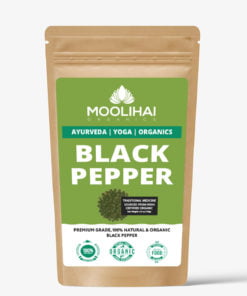Guide
What Is the Ayurvedic Diet? Benefits, Downsides, and More
Ayurvedic diet is an eating pattern that has been around for centuries. Ayurvedic diet is based on Ayurvedic medicine principles and focuses on balancing three types of energy patterns. Ayurveda is an evidence-based healing system that concentrates on preventing diseases and promoting positive health through the balance of body, mind, and environment.
Like many other diets, the Ayurvedic diet provides suggestions about what foods to eat and what to avoid based on your body type. An Ayurvedic diet is more popular because it aids in promoting better health to your body and mind.
This article reviews all the things that you need to know about ayurvedic dieting, incorporating its health benefits, what foods to eat and what foods to avoid and their disadvantages.
What is an Ayurvedic Diet?
Ayurveda is a centuries-old Hindu system of medicine and nutrition focused on promoting a balance between your body and mind. It was developed along with yoga as the best means to prevent imbalance and illness. Ayurvedic diet is based on identifying your dominant dosha and consuming appropriate foods for your dosha or constitutional type.
As stated in Ayurveda, five elements make up the universe — Teja (fire), Jala (water), Vayu (air), Akash (space), and Prithvi (earth). The balance of these five elements is called Doshas. One famous Ayurvedic saying is that “When diet is wrong, then no use of medicine; When diet is right, then no need for medicine.”
These five elements are believed to form three different doshas, which are defined as energy types circulating within your body. Each dosha is responsible for particular physiological functions. And its energy helps to determine what to eat to boost health, prevent or manage diseases, and maintain overall health and wellness.
For example, vata dosha maintains electrolyte balance and movement. Meanwhile, pitta dosha controls thirst, hunger, and body temperature, while Kapha dosha promotes joint function.
Ayurvedic medicine seeks to create a strong and healthy body through a series of diet, exercise, and lifestyle practices, including sleep, mindful living, and intuitive eating. Ayurvedic practitioners believe that an Ayurvedic lifestyle, including diet, can promote health, and many proponents agree. If you follow an Ayurvedic diet, you should eat minimally processed foods, practice mindful eating rituals, improve health, and promote weight loss.
Read on to know about your dosha’s and decide which will support your health.
Identifying Doshas
“Ayurvedic belief says that every individual contains a varying balance of each dosha, generally with one or two in dominance,” says Apte. “Naturally everyone will have a unique dominant dosha when we are born, it doesn’t mean imbalance, but fairly shows who or how we are in our healthy and balanced state.” Finding out your dosha can be a complex process, but in the most basic terms:
According to Ayurvedic practice, an Ayurvedic practitioner can determine a person’s dosha based on physical, mental, emotional, and behavioral characteristics. Here is a standard overview of each dosha.
Vata Dosha

Vata is the leader of three doshas in the Ayurvedic principles. It regulates all the activities in the body – mental as well as physical.
People with vata dosha are usually described as energetic, slim, and creative. Vata is constituted by two elements, space and air, which is the energy of the movement. It is responsible for breathing, blinking our eyes, beating our heart, and many more bodily functions.
When balanced, vata is lively and energetic. More relaxation and adequate rest are needed to keep vata in balance. People with imbalanced vata may face problems like dry skin, dry hair, and cough. People with dominant vata dosha are considered active, bright, and creative, also they talk, walk, and think fast, but they get tired quickly.
According to Ayurveda, for optimal health, a person with vata-dominant should regularly follow meditation and other calming activities, consume warm drinks and foods, and maintain a warm body temperature to manage stress.
Strengths: Vata dominant peoples are highly creative and learn quickly, kind-hearted, multitaskers, flexible, and naturally slim.
Weaknesses: unstable mood, anxious, forgetful, can get overwhelmed easily, more sensitive to the cold, irregular appetite and eating patterns, have trouble sleeping, poor circulation (cold feet and hands), prone to digestive issues and gastrointestinal problems like constipation and bloating.
Pitta Dosha

Pitta is based on fire and water, which is the principle of metabolism and digestion. Summer is known as the pitta season for its hot, sunny days. It is responsible for regulating the body temperature through chemical transformation of food, assimilation, absorption, and nutrition. Pitta dosha promotes vitality and appetite.
People with imbalanced pitta dosha can lead to anger, agitation and can even cause burning disorders such as ulcers and inflammation. To maintain a balance of pitta, inhale cooling scents like mint, rose, and lavender can help.
People with a dominant pitta dosha are prominent, strong-willed, intelligent, hard-working, decisive, determined, and tend to have leadership qualities. They must also focus on work-life balance and avoid extreme heat.
Strengths: sharp intellect, self-determined, intense, purposeful, learns quickly, masters skills easily, natural leaders, competitive, good circulation, healthy skin and hair, and quick metabolism.
Weaknesses: People with this pitta dosha generally are short-tempered, and may suffer from conditions like indigestion, high blood pressure, heart disease, prone to acne and inflammation, always hungry, mood swings when hungry, and sensitivity to hot temperatures.
Kapha Dosha

Kapha is based on earth and water, which is the principle of structure and lubrication. Spring is known as Kapha season, as several parts of the world slowly exit hibernation. Kapha dosha is also pronounced as “kuffa.” Kapha dosha is described as loving, calm, or lazy. Qualities include heavy, moist, soft, and static. It helps to maintain body resistance, building up the body, repair, and growth of new cells.
Kaphas are often huge-framed and muscular, and they have a slow metabolism. Regular exercises, and additional fluids can help in balancing Kapha dosha.
People who’re dominant with this dosha are described as intense, thick-boned, thoughtful, steady, calm, loyal, and caring. Moreover, Kapha-dominant people will rarely get upset and will go through life in a slow, deliberate manner, and think before acting.
Strengths: People with Kapha dosha are naturally empathetic, caring, patient, trusting, calm, happy, and romantic. They also have strength, strong bones and joints, a healthy immune system, stamina, and sharp intelligence.
Weaknesses: prone to weight gain, slow metabolism, sluggishness, over-sleeping, higher risk of heart disease, asthma, mucus buildup, susceptible to depression, diabetes, needs regular motivation and encouragement.
For good health, a Kapha-dominant person should focus on regular exercise, a healthy diet, maintaining a warm body temperature, and establishing a regular sleep routine.
9 Rules for an Ayurvedic Diet
Ayurvedic diet is a meal plan or a principle of creating health within the body and mind. Several years before, Hippocrates directed, “Let food be the medicine,” and Ayurveda has expounded this philosophy practically. Meal timing, food selection, and awareness during meals increase toxicity (ama) or vitality (Ojas). The following ten rules will provide guidelines for tapping into the ancient sense of Ayurveda and using it to create life, health, and energy through food.
1] Eat mindfully and with concentration
Avoid laughter, talking, reading books, watching TV, checking emails, answering phone calls, and other distractions while eating to appreciate your meal and so you will get full health benefits.
An Ayurveda diet says that mealtime is the best opportunity to connect with the information and inherent energy you consume. So try to eat with deep awareness. To eliminate distractions, try it by taking just one meal in a day with silence and observe your senses for a few minutes.
It’s also essential to eat quickly to avert the food from getting cold. Also, chew the food well to savor the food’s taste.
2] Include all six Rasas or taste
Intaking of all six tastes at each meal helps the body to receive a bio-diverse lively palate.
Ayurveda recognizes the six tastes, each of which has a crucial role to play health, physiology, and well-being. The six rasas are sweet, salt, pungent, sour, bitter, and astringent.
3] Include all six rasas or taste
Intaking of all six tastes at each meal helps the body to receive a bio-diverse lively palate.
Ayurveda recognizes the six tastes, each of which has a crucial role to play health, physiology, and well-being. The six rasas are sweet, salt, pungent, sour, bitter, and astringent.
4] Consume whole fresh foods
Start your meal with sweet-tasting food like fruits and desserts. Also, continue with salty and sour foods such as seafood and citrus fruit. Finish with pungent like peppers and onions, bitter like bitter gourd, celery, green leafy vegetables, and astringent foods like tea or green apples.
5] Eat until satisfied but not complete.
Be aware of hunger signs and signals of fullness to avoid overeating. Most important one is, focus on breakfast and lunch. Ayurvedic practitioners suggest eating a modest amount of breakfast and a vast amount of fully satisfying lunch. Dinner may or may not be consumed as your wish or based on your hunger levels.
There is an old saying by Adelle Davis “Breakfast like a king; lunch like a prince; dinner like a pauper.” This quote is related to Ayurvedic practices.
6] Reduce Beverages and Ice cold foods
Agni plays a vital role in the digestive power of the energetic and physical body. This dosha is hot and bright, which is similar to a blazing campfire. Also, it helps to digest foods, emotions, and experiences. It is necessary to avoid decreasing Agni’s intensity with beverages and ice-cold foods for stoking one’s inner fire. Agni of all doshas can be reduced if a steady stream of cold food or drinks is consumed. Hence, by this way, the digestive power will remain strong.
7] Stop eating three hours before bedtime.
Eating late at night may upset your body’s natural day and night cycle, impairing your sleep cycle and can cause trouble in managing your blood sugar levels.
When we are asleep, our body heals, repairs, and restores while the mind digests emotions, thoughts, and experiences of the day. If the body’s function is redirected into physical digestion, the mental, digestive, and biological healing processes will be stopped. For this reason, the Ayurvedic practitioners recommend that the last meal of the day should be very light and it must be finished in three hours before going to bed, so that you can avoid imbalance.
In this way, our body’s prana dosha gets free to do its repair and resting functions during the deep sleep levels.
8] Avoid snacks
Under Ayurvedic principles, three stages of digestion is done after a meal. The Kapha energies are dominant in the first hour after a meal so that the body may feel heavy, complete, and sedate. After two to four hours of meal, the components of Pitta govern digestion.
During this time, internal heat rises, hydrochloric acid increases, and the food is converted into sustenance for the body. Finally, Vata energy increases after Four to five hours of a meal. During this time the lightness and space returns, and appetite increases.
Interrupting the digestive cycle with more food leads to incomplete digestion. Finally, incomplete digestion results in toxin (ama) accumulation, which may be a plethora of mild to moderate symptoms. For this reason, Ayurveda suggests three meals each day, with no snacks in between to maintain proper digestion and keeps your stomach stress-free.
Eat only when your previous meal has been digested. The Ayurvedic principles also suggest that not to eat anything in between the three hours of your last meal or snack. And also you should not go without food for more than six hours.
9] Take Herbal Tea Between Meals
Tea is not just a palate-pleasing beverage, and it is also a powerful healer that can help restore health, vitality, and joy. Some studies have proven that sipping a cup of tea during or after meals aids digestion by relieving flatulence and stomach gas.
Drinking a cup of tea helps the digestive system to do its job effectively by stimulating the production of bile, saliva, and gastric juice for good digestion. Note that not all teas aid significant effects on digestion. Vata doshas will find grounding and calmness in warm, spicy teas such as cinnamon, ginger, and cloves. People with pittas can take their tea either hot or cool, but it should have some cooling herbs such as peppermint, coriander, and rose for balancing. Kaphas will increase energy, digestion, and optimism with licorice, black pepper, and cardamom.
To avoid diluting Agni, beverages including teas, should be minimally consumed with meals. However, between meals, teas can be enjoyed liberally and act as herbal remedies. Drinking tea between meals pushes the body, with full of “liquid medicine,” controls snack cravings, facilitates detoxification, and tends to digestive fire.
9 Rules for an Ayurvedic Diet
Ayurvedic diet is a meal plan or a principle of creating health within the body and mind. Several years before, Hippocrates directed, “Let food be the medicine,” and Ayurveda has expounded this philosophy practically. Meal timing, food selection, and awareness during meals increase toxicity(ama) or vitality (Ojas). The following ten rules will provide guidelines for tapping into the ancient sense of Ayurveda and using it to create life, health, and energy through food.
1] Eat mindfully and with concentration
Avoid laughter, talking, reading books, watching TV, checking emails, answering phone calls, and other distractions while eating to appreciate your meal and so you will get full health benefits.
An Ayurveda diet says that mealtime is the best opportunity to connect with the information and inherent energy you consume. So try to eat with deep awareness. To eliminate distractions, try it by taking just one meal in a day with silence and observe your senses for a few minutes.
It’s also essential to eat quickly to avert the food from getting cold. Also, chew the food well to savor the food’s taste.
2] Include all six Rasas or taste
Intaking of all six tastes at each meal helps the body to receive a bio-diverse lively palate.
Ayurveda recognizes the six tastes, each of which has a crucial role to play health, physiology, and well-being. The six rasas are sweet, salt, pungent, sour, bitter, and astringent.
3] Include all six rasas or taste
Intaking of all six tastes at each meal helps the body to receive a bio-diverse lively palate.
Ayurveda recognizes the six tastes, each of which has a crucial role to play health, physiology, and well-being. The six rasas are sweet, salt, pungent, sour, bitter, and astringent.
4] Consume whole fresh foods
Start your meal with sweet-tasting food like fruits and desserts. Also, continue with salty and sour foods such as seafood and citrus fruit. Finish with pungent like peppers and onions, bitter like bitter gourd, celery, green leafy vegetables, and astringent foods like tea or green apples.
5] Eat until satisfied but not complete.
Be aware of hunger signs and signals of fullness to avoid overeating. Most important one is, focus on breakfast and lunch. Ayurvedic practitioners suggest eating a modest amount of breakfast and a vast amount of fully satisfying lunch. Dinner may or may not be consumed as your wish or based on your hunger levels.
There is an old saying by Adelle Davis “Breakfast like a king; lunch like a prince; dinner like a pauper.” This quote is related to Ayurvedic practices.
6] Reduce Beverages and Ice cold foods
Agni plays a vital role in the digestive power of the energetic and physical body. This dosha is hot and bright, which is similar to a blazing campfire. Also, it helps to digest foods, emotions, and experiences. It is necessary to avoid decreasing Agni’s intensity with beverages and ice-cold foods for stoking one’s inner fire. Agni of all doshas can be reduced if a steady stream of cold food or drinks is consumed. Hence, by this way, the digestive power will remain strong.
7] Stop eating three hours before bedtime.
Eating late at night may upset your body’s natural day and night cycle, impairing your sleep cycle and can cause trouble in managing your blood sugar levels.
When we are asleep, our body heals, repairs, and restores while the mind digests emotions, thoughts, and experiences of the day. If the body’s function is redirected into physical digestion, the mental, digestive, and biological healing processes will be stopped. For this reason, the Ayurvedic practitioners recommend that the last meal of the day should be very light and it must be finished in three hours before going to bed, so that you can avoid imbalance.
In this way, our body’s prana dosha gets free to do its repair and resting functions during the deep sleep levels.
8] Avoid snacks
Under Ayurvedic principles, three stages of digestion is done after a meal. The Kapha energies are dominant in the first hour after a meal so that the body may feel heavy, complete, and sedate. After two to four hours of meal, the components of Pitta govern digestion.
During this time, internal heat rises, hydrochloric acid increases, and the food is converted into sustenance for the body. Finally, Vata energy increases after Four to five hours of a meal. During this time the lightness and space returns, and appetite increases.
Interrupting the digestive cycle with more food leads to incomplete digestion. Finally, incomplete digestion results in toxin (ama) accumulation, which may be a plethora of mild to moderate symptoms. For this reason, Ayurveda suggests three meals each day, with no snacks in between to maintain proper digestion and keeps your stomach stress-free.
Eat only when your previous meal has been digested. The Ayurvedic principles also suggest that not to eat anything in between the three hours of your last meal or snack. And also you should not go without food for more than six hours.
9] Take Herbal Tea Between Meals
Tea is not just a palate-pleasing beverage, and it is also a powerful healer that can help restore health, vitality, and joy. Some studies have proven that sipping a cup of tea during or after meals aids digestion by relieving flatulence and stomach gas.
Drinking a cup of tea helps the digestive system to do its job effectively by stimulating the production of bile, saliva, and gastric juice for good digestion. Note that not all teas aid significant effects on digestion. Vata doshas will find grounding and calmness in warm, spicy teas such as cinnamon, ginger, and cloves. People with pittas can take their tea either hot or cool, but it should have some cooling herbs such as peppermint, coriander, and rose for balancing. Kaphas will increase energy, digestion, and optimism with licorice, black pepper, and cardamom.
To avoid diluting Agni, beverages including teas, should be minimally consumed with meals. However, between meals, teas can be enjoyed liberally and act as herbal remedies. Drinking tea between meals pushes the body, with full of “liquid medicine,” controls snack cravings, facilitates detoxification, and tends to digestive fire.
What Can You Eat According to Your Doshas?
Here are some of the foods that you should avoid or limit based on your dosha’s.
Vata Dosha
| What To Eat | What Not To Eat |
|---|---|
| Sweet fruits like cooked apples, berries, cherries, and avocados. | Dried fruits, Raw apples, and watermelon |
| Cooked vegetables like asparagus or beets | Frozen, raw, or dried vegetables |
| Grains including rice or quinoa | Potatoes |
| Red lentils | Corn, Chickpeas, Barley, Split peas |
| Dairy products (in moderation) | Yogurt |
| Beef, Eggs, Fish | Lamb, Turkey |
| Beer or white wine | Red wine |
| Peanuts and pecans | Chocolate |
| Black pepper | Beans, such as black beans, kidney beans, and navy beans |
| Coriander leaves | |
| Vinegar | |
| Chia or flax seeds | |
| Sesame oil and ghee |
Pitta Dosha
| What To Eat | What Not To Eat |
|---|---|
| Sweet or bitter vegetables like cauliflower or broccoli | Sour fruits, Avocado, Pungent vegetables like onion or raw leeks, Spinach |
| Raisins, Almonds | Cashews, peanuts, pine nuts, pistachios, walnuts, sesame seeds |
| Watermelon | Rye, Soy sauce, Sour cream |
| Coconut | Bread made with yeast, Quinoa and brown rice |
| Dry cereal | Chocolate |
| Pasta | Chili pepper |
| Black beans | Red or sweet wine |
| Unsalted butter | Salted butter |
| Egg whites, Chicken (white meat) | Beef, Chicken (dark meat), Seafood other than shrimp |
| Beer, Dry white wine |
Kapha Dosha
| What To Eat | What Not To Eat |
|---|---|
| Astringent fruits like applesauce or prunes | Sweet or sour fruits like grapefruit or figs |
| Pungent or bitter vegetables like carrots or celery | Sweet or juicy vegetables like cucumber or zucchini |
| Granola, Polenta, Lima beans | Cooked oats, Rice, Wheat |
| Buttermilk, Cottage cheese | Kidney beans |
| Shrimp, Turkey | Soft or hard cheese, Tofu |
| Dry red or white wine | Freshwater fish, Duck |
| Hard alcohol | |
| Pasta, Ketchup | |
| Chocolates, Pancakes |
Disadvantages
Even though several health benefits are associated with the ayurvedic diet, there are some disadvantages to consider.
Here’re some of the potential downsides of the Ayurvedic diet.
- It may feel overly restrictive.
- Can be confusing
- Determining dosha may be difficult
- Some herbs may cause side effects.
- Complicated sometimes and may make it challenging to stick to the diet long term.
Summary
Thus the Ayurvedic diet offers some qualities with other diets that include lifestyle elements and wellness philosophy. Similar diets promote organic over processed ones, avoid calorie counting, and suggest what to eat and what not to eat can help you achieve wellness.











Ponnatharam Stone (Raw) | For Permanent Hair Removal
Vengai Paal | Black Bindi | Dhrishti Pottu | Vengai Pottu for Babies | 100% Natural
Dried Avaram Senna Flower / Cassia Senna Auriculata / Aavaram Poo / Tarwar / Amaltas Leaves / Senna Auriculata / Avaram Poo / Sanay / Alexandrina / Tanner’s Cassia flower
Natural Dried Moringa Flower – Moringa Oleifera – Drumstick Tree Flower – Murungai Poo – Munagaku Flower
Akasa Garudan Kilangu / Redfruit Creeper / Corallocarpus Epigaeus
Original Edible Camphor | Pacha Karpooram | Bhimseni Camphor
Saussurea Obvallata Seeds / Brahmakamal Seeds / Queen of the night / Sacred Saussurea Kon Kapfu / Brahma Kamalam / Nishagandha
Insulin Leaf Powder / Chamaecostus Cuspidatus / Costus Pictus / Spiral Ginger / Insulin Powder / Costus Igneus
Achu Pottu for Babies | Bindi Mould Set | Baby Seratta – 1 Set
Kaunch Beej Powder |Poonaikali | Velvet Bean Powder | Mucuna Pruriens | Kapikacchu | Natural Nervine Tonic & Muscle Builder
Aalam Pazham / Banyan Fruit Powder / Ficus Benghalensis / Marri Palu / Bargad / Dodda Alada Mara / Peraal / Vat Vriksha Powder
Traditional Vasambu Valayal for Babies | Calamus Bracelet | 100 % Pure & Natural